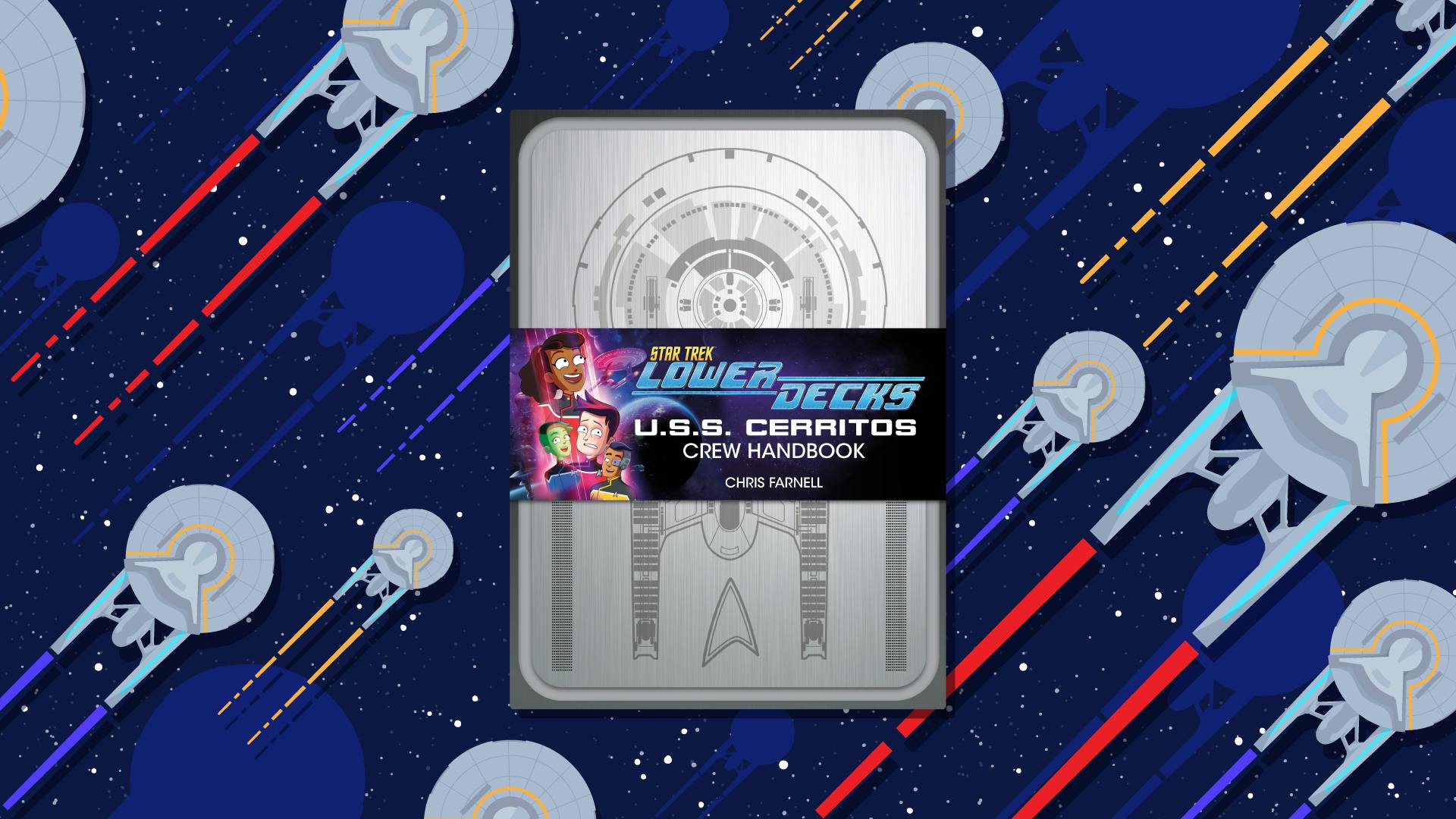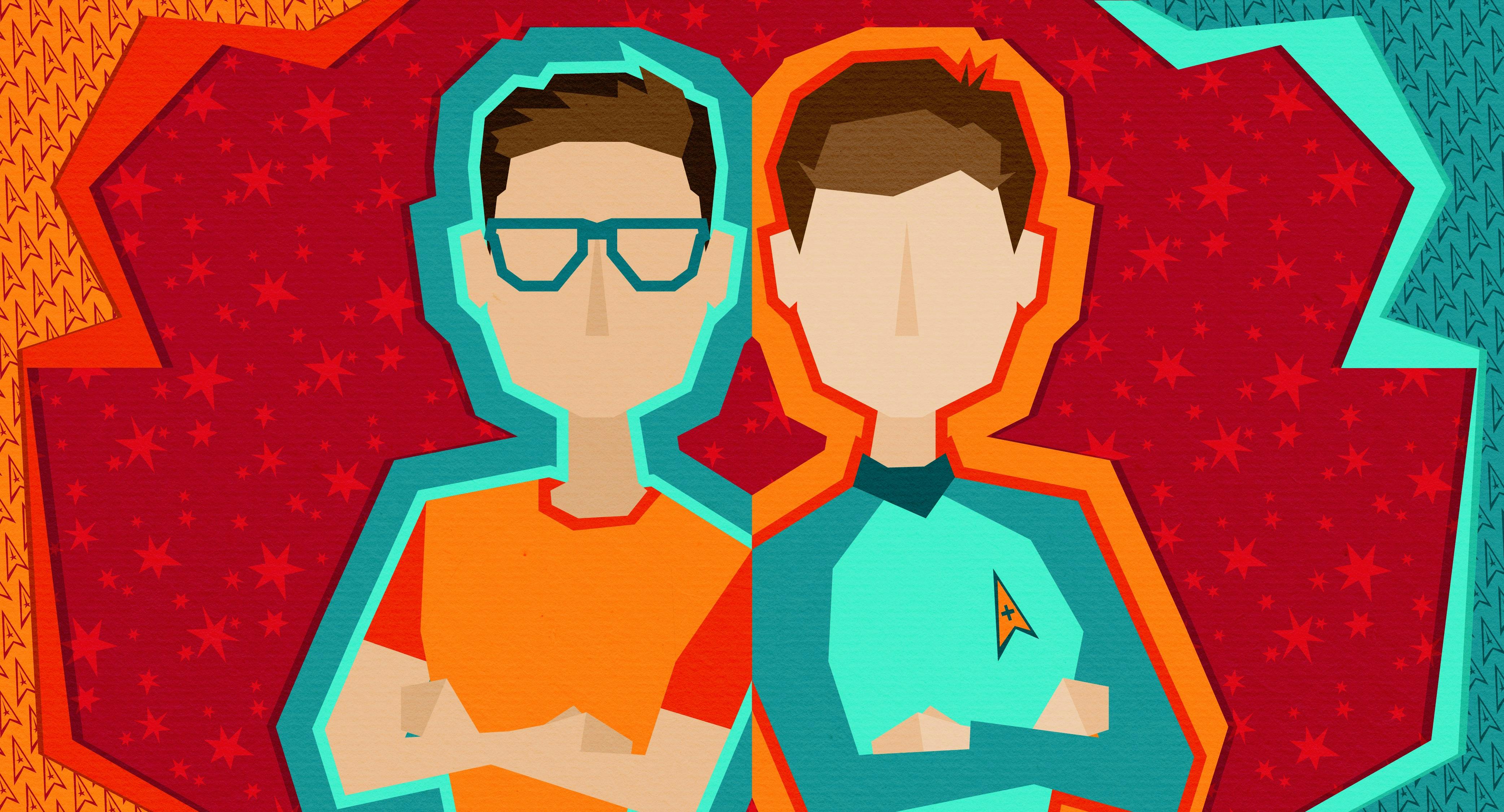Published Oct 4, 2023
Never Take a Successful Space Flight for Granted
For World Space Week, we look at the failed missions and near misses in both Star Trek and our own world remind us of the real courage astronauts possess.

StarTrek.com
On , Commander Chakotay reverently says that Earth's early astronauts were "the real pioneers" of outer space exploration. Lt. Tom Paris seriously ponders if those early space pioneers had been made of "sterner stuff" than the crew of U.S.S. Voyager. Interesting thoughts from two officers aboard Voyager, which travels alone through many of the most dangerous and far-flung reaches of the Delta Quadrant!
In the universe of Star Trek, and in real life too, astronauts frequently amaze with their immense skill, unspoken courage, and intense commitment to their groundbreaking “missions.”
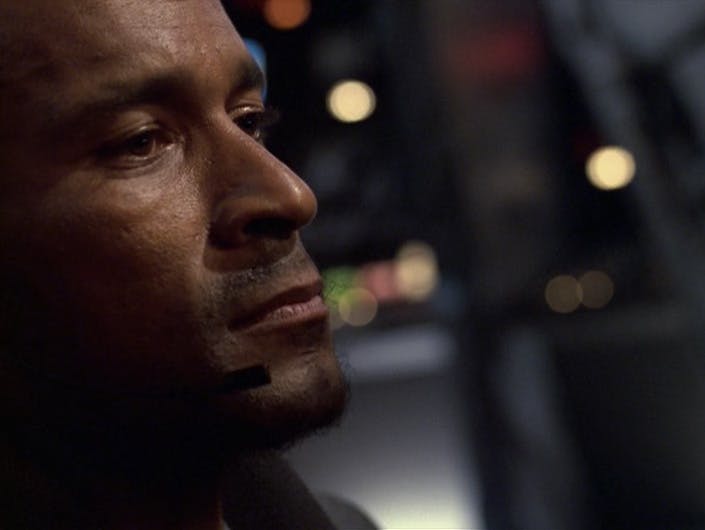
"One Small Step"
StarTrek.com
What I've seen proves we were right to come out here.
Lt. John Kelly, "One Small Step"
Ares IV mission leader John Kelly was trapped with his command module in a spacial anomaly. He understood that he'd soon be paying the ultimate price for intersecting with a terror of the final frontier.
Meanwhile, fellow astronauts Rose Kumagawa and Andrei Novakovich were temporarily marooned on the barren surface of Mars. The pair had been near the end of their allotted time on the Red Planet when the command module vanished. Yet they endured weeks worth of the inhospitable martian environment, long enough to be rescued.
Their survival implies great resourcefulness and teamwork on their parts. Their rescue suggests that NASA had a contingency plan in place prior to the mission. In reality, NASA has prepared similar contingencies for some Skylab expeditions and several Space Shuttle missions.
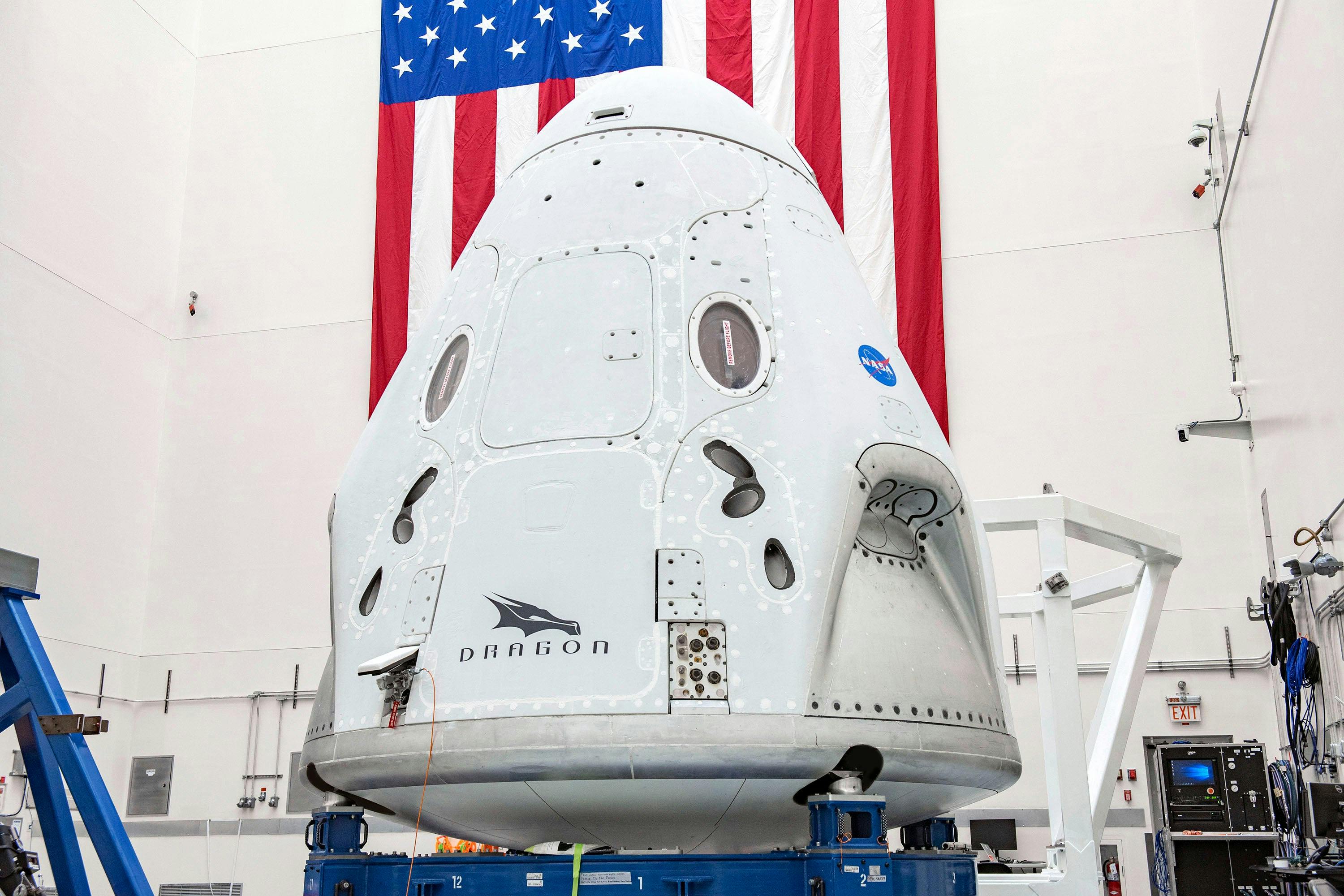
The SpaceX Crew Dragon spacecraft
SpaceX
Rescue would have been impossible, however, for Apollo 11 astronauts Armstrong and Aldrin had the ascent stage of their lunar module failed to lift them from the surface of the Moon. If Apollo 11 had ended so terribly, would the United States have ever attempted another lunar landing? That's an impossible question to answer with certainty, but consider this excerpt from the "In Event of Moon Disaster" memo by William Safire, proposing what President Richard Nixon should say had lack of lunar liftoff occurred:
Others will follow, and surely find their way home. Man's search will not be denied. But these men were the first, and they will remain the foremost in our hearts.
William Safire, "In Event of Moon Disaster" Memo
For propulsion, Lt. Kelly's command module, as seen on Voyager, utilized thrusters and a third-generation ion drive. Sensor equipment on the spacecraft included lidar and a trans-spectral imager.
Reviewing historical Ares IV transmissions, Chakotay and Paris are impressed by Kelly's courageous attempts to gather all data possible on the graviton ellipse that will eventually envelop him. Seven of Nine later discovers that with power dwindling after several days confined in the ellipse, Kelly shut down life support to keep the command module's imager functioning as long as possible.

A view of the Apollo 9 Lunar Module
NASA
The real-life Apollo 9 mission of March 1969 captured spectacular images of sites on Earth via the Multispectral Terrain Photography Experiment. More recently, the International Space Station has hosted hyperspectral imaging projects. Among these was the Hyperspectral Imager for Coastal Oceans (HICO), which was installed in 2009, damaged by radiation in 2014, and decommissioned in 2018. According to NASA, HICO data pertained to environmental studies, humanitarian efforts, military situations, and the detection of leaking oil pipelines.
Rest in peace, Colonel.
Cmdr. William Riker, "The Royale"
On planet Theta 116, the Enterprise-D's first officer speaks these words of honor after working with Lt. Cmdr. Data and Lt. Worf to examine Col. Stephen Richey's uniform. They soon thereafter learn that Richey had been the only survivor of doomed exploratory shuttle Charybdis, which was launched four years after the misfortune of Ares IV, on a mission to exit Earth's solar system. As intimated by the “First Beyond the Solar System” mission patch on Richey's uniform (clearly seen in the remastered version of the episode), they did so despite the failures of two previous attempts.
That decision parallels the determination to continue manned spaceflight after multiple real-life, deadly disasters. Lessons learned from the lethal Apollo 1 fire of February 1967 allowed NASA to achieve many triumphs moving forward in Project Apollo, not the least of which were landings on the Moon. If Space Shuttle flights hadn't resumed after the deadly loss of Challenger in January 1986, and again after the fatal reentry of Columbia in February 2003, crucial accomplishments might never have happened — the Hubble Space Telescope, its servicing missions, and the International Space Station.
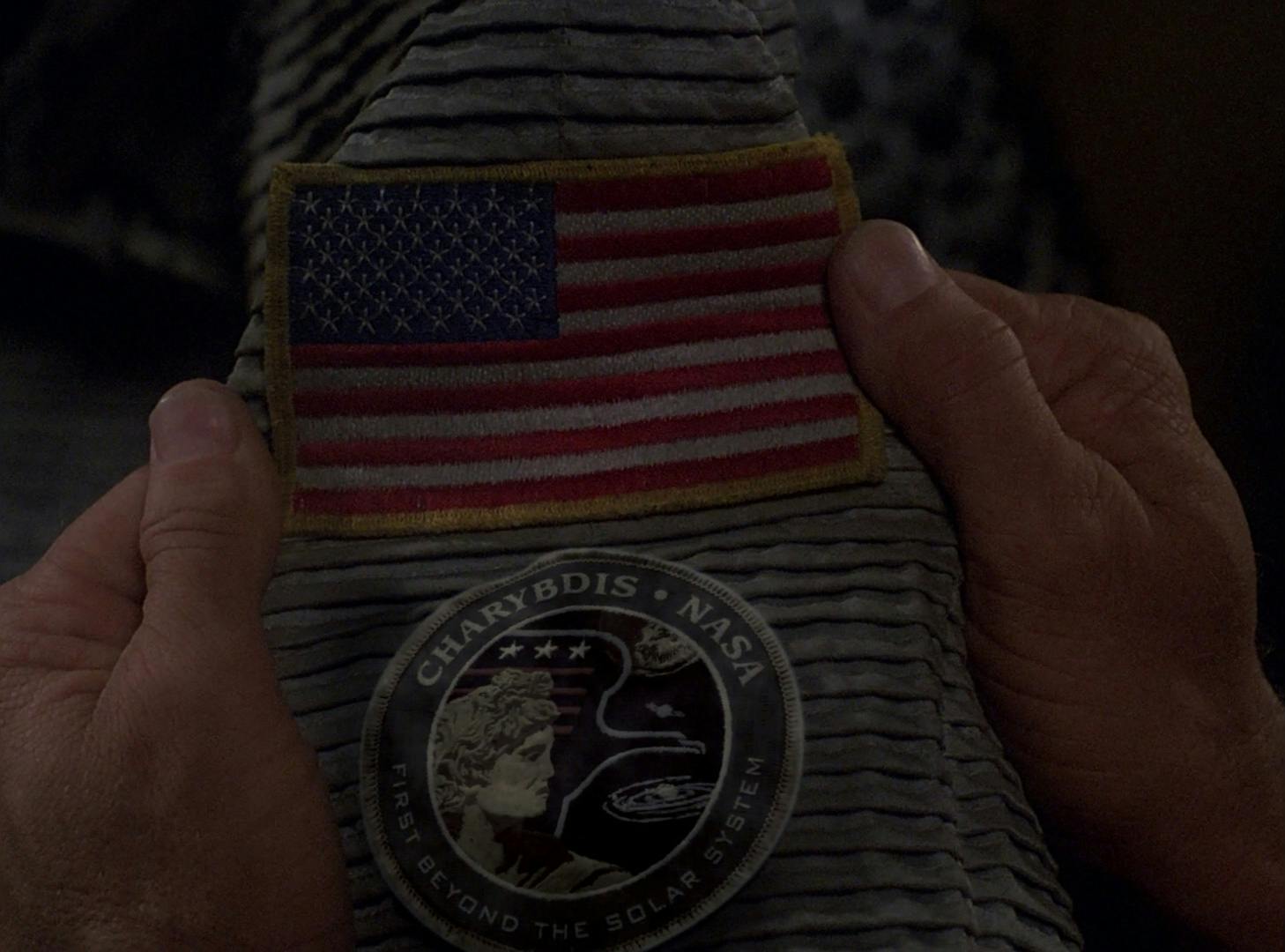
"The Royale"
StarTrek.com
The previously mentioned patch is a reuse from the real Apollo 17. (Crew names are visible in the non-remastered version of the episode.) In Star Trek’s reality, this mission is remembered as the most recent manned expedition to the Moon. Some highlights include — the only manned moonshot launched at night; three extra-vehicular activities on the Moon by astronauts Cernan and Schmitt; discovery of volcanic glass; the lunar sounder experiment, which used radar beams from the command module to scan beneath the lunar surface; and an EVA between Moon and Earth by astronaut Evans to retrieve results of the lunar sounder and other experiments.
Stephen Richey had lived for a further 38 years in an alien-created facsimile of the fictitious Hotel Royale novel. He theorized in his diary that these aliens had found the book onboard Charybdis after unintentionally killing everyone else on the ship. Riker is caught off guard as he reads Richey's confession, that the novel was too banal for his tastes and that he'd welcome the arrival of death.
Human explorers should think about placing warning labels on their books! Avid Star Trek fans may recall that the inhabitants of Sigma Iotia II mistook the book Chicago Mobs of the Twenties as a lifestyle bible of sorts in The Original Series episode, "A Piece of the Action."
The Weird Planet Where Time Moved Very Fast and So Did the People Who Lived There
Working title of an essay by Naomi Wildman, "Blink of an Eye"
Seven of Nine suggests "The Weird Planet Displaced in Time" as a superior phrase. Isn't the first one rather fun though? Whatever the title of her essay, Naomi would likely discuss how time progresses so quickly on the planet that Voyager's crew can observe an entire century in a matter of hours. And she would probably mention that Voyager's presence is causing quakes and other phenomena on the planet. The time differential poses a unique danger to the crew of Orbital 1, a manned capsule from the planet that docks with Voyager to investigate what they call the "Sky Ship."
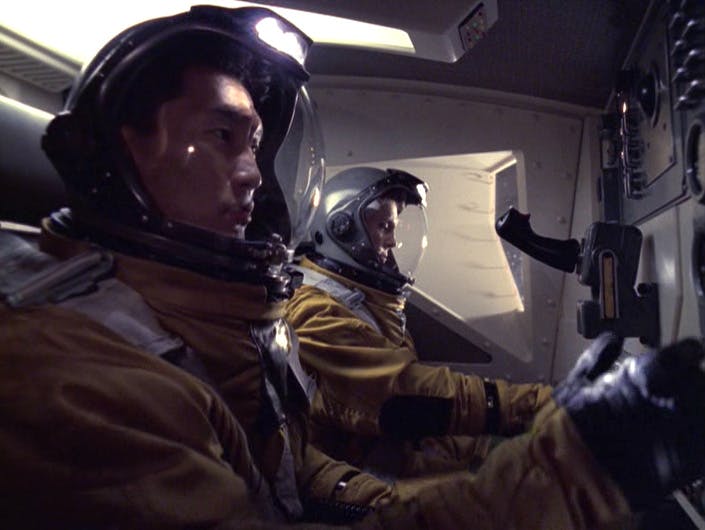
"Blink of an Eye"
StarTrek.com
Orbital 1 is similar to real-life Gemini capsules. The latter held two astronauts and were stepping stones to Apollo spacecraft. Orbital 1 also splashes down on the water just as Mercury, Gemini, and Apollo capsules did. Gemini astronauts practiced and problem-solved rendezvous, docking, and spacewalking techniques. This was risky business! In 1966, astronauts Armstrong and Scott nearly perished when their Gemini VIII ship started spinning out of control during the first docking in space.
Once again in our own reality, astronauts McDivitt, Scott, and Schweickart flew the aforementioned Apollo 9 mission. Even though the mission didn't go to the Moon, the astronauts conducted the first manned tests of the lunar module in space. These tests included the first ever throttling of an engine in space with crew aboard, and the first transfer of crew from one docked spacecraft to another without an EVA.
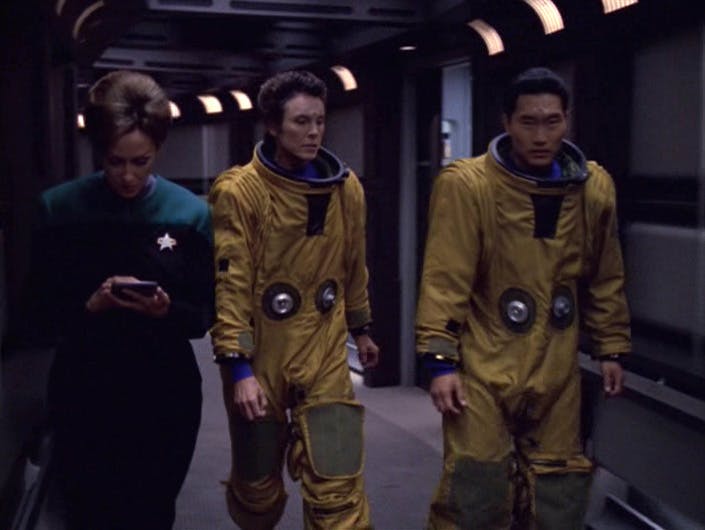
"Blink of an Eye"
StarTrek.com
After docking with Voyager, the ‘Sky Ship,’ astronauts Tarrina and Gotana-Retz board the vessel. They begin to feel unwell and uneasy, and encounter Voyager's crew frozen in time. Gotana-Retz suggests turning back, but Tarrina overrules him and insists that they both continue the mission. Soon after reaching Voyager's bridge, the astronauts collapse as they transition into the normal time-frame. (The Original Series' "Wink of an Eye" is similarly titled and also shows that humanoids are physically fragile when experiencing time displacement.) Tarrina doesn't survive the transition, but Gotana-Retz does. After splashing down on his planet to request that they stop attacking the Sky Ship, he briefly returns with advanced technology to tow Voyager out of orbit.
In 2018, United States astronaut Nick Hague and Russian cosmonaut Aleksey Ovchinin had to abort their Soyuz MS-10 mission shortly after launch due to a malfunction. Their spacecraft carried them safely through the abort procedure and back to the ground.
These near misses and terrible sacrifices in Star Trek and our own world remind us that we should never take successful spaceflights for granted.

